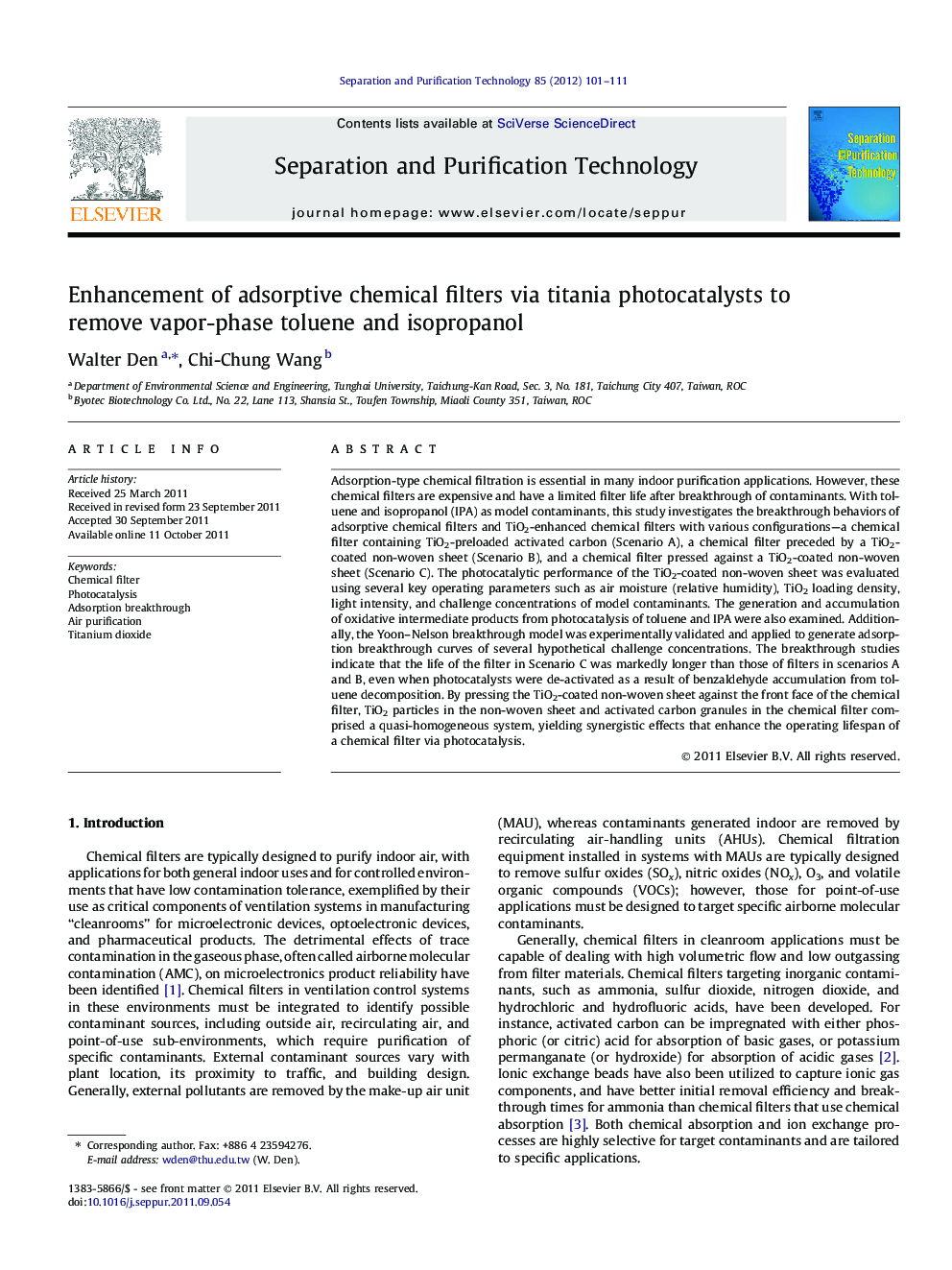| Article ID | Journal | Published Year | Pages | File Type |
|---|---|---|---|---|
| 642388 | Separation and Purification Technology | 2012 | 11 Pages |
Adsorption-type chemical filtration is essential in many indoor purification applications. However, these chemical filters are expensive and have a limited filter life after breakthrough of contaminants. With toluene and isopropanol (IPA) as model contaminants, this study investigates the breakthrough behaviors of adsorptive chemical filters and TiO2-enhanced chemical filters with various configurations—a chemical filter containing TiO2-preloaded activated carbon (Scenario A), a chemical filter preceded by a TiO2-coated non-woven sheet (Scenario B), and a chemical filter pressed against a TiO2-coated non-woven sheet (Scenario C). The photocatalytic performance of the TiO2-coated non-woven sheet was evaluated using several key operating parameters such as air moisture (relative humidity), TiO2 loading density, light intensity, and challenge concentrations of model contaminants. The generation and accumulation of oxidative intermediate products from photocatalysis of toluene and IPA were also examined. Additionally, the Yoon–Nelson breakthrough model was experimentally validated and applied to generate adsorption breakthrough curves of several hypothetical challenge concentrations. The breakthrough studies indicate that the life of the filter in Scenario C was markedly longer than those of filters in scenarios A and B, even when photocatalysts were de-activated as a result of benzaldehyde accumulation from toluene decomposition. By pressing the TiO2-coated non-woven sheet against the front face of the chemical filter, TiO2 particles in the non-woven sheet and activated carbon granules in the chemical filter comprised a quasi-homogeneous system, yielding synergistic effects that enhance the operating lifespan of a chemical filter via photocatalysis.
► Adsorptive air filters were photocatalytically enhanced for VOC removal. ► Chemical filters pressed with a titania-coated filter performed most efficiently. ► Adsorption capacity of the enhanced filters was extended five times greater. ► Enhanced filters last longer as VOCs are photocatalytically oxidized efficiently.
